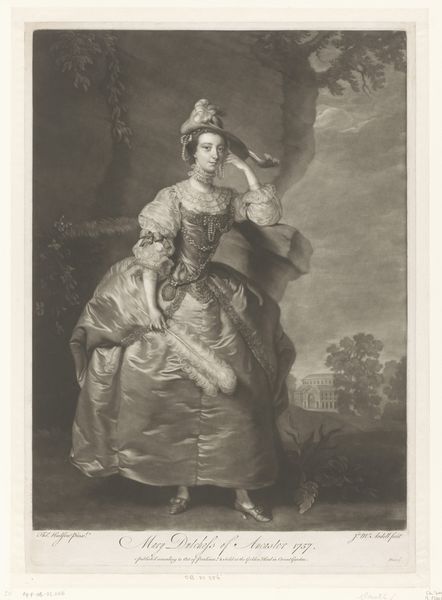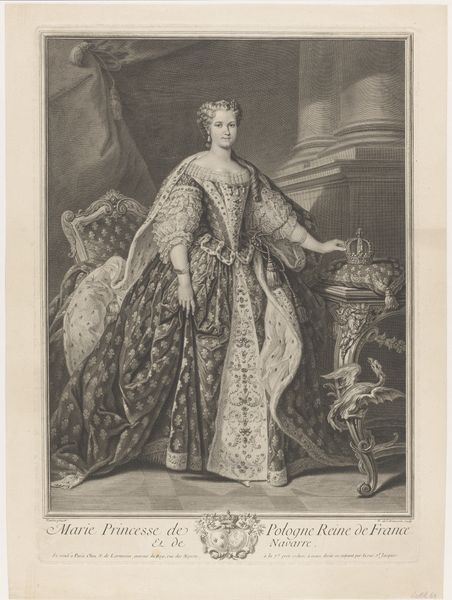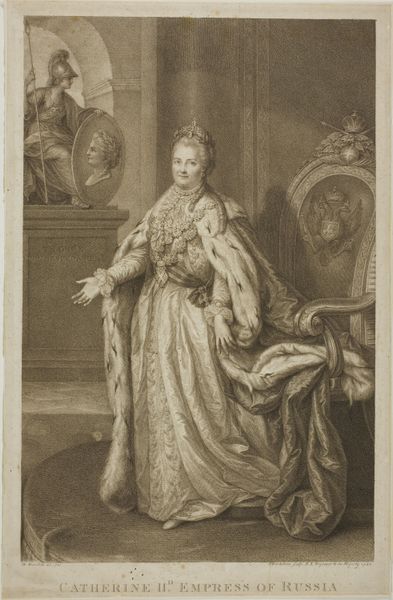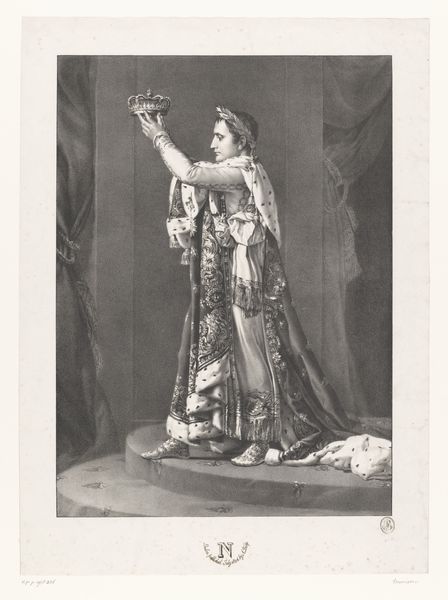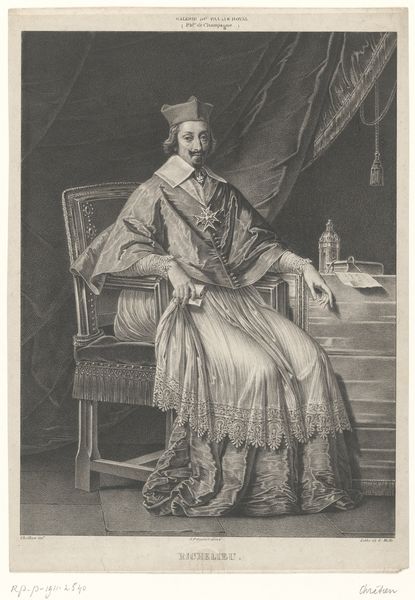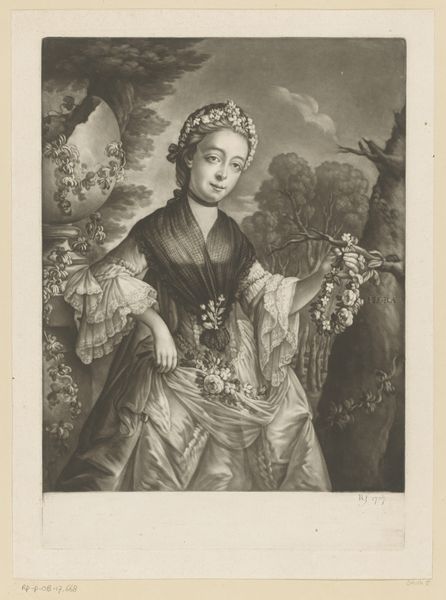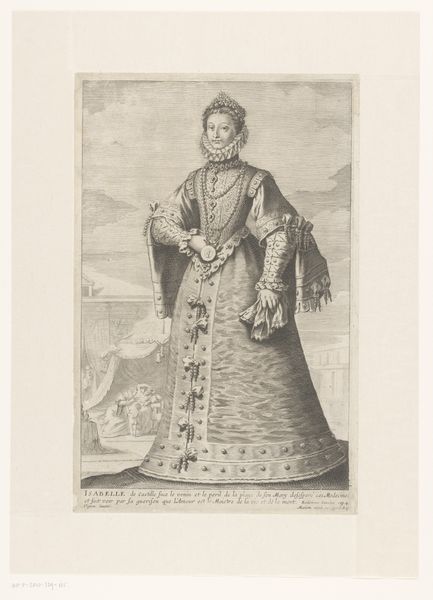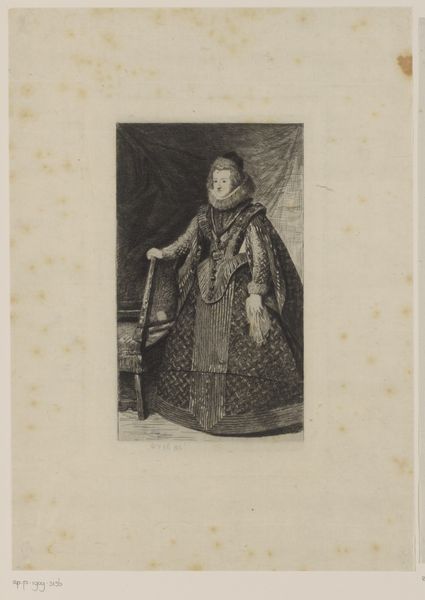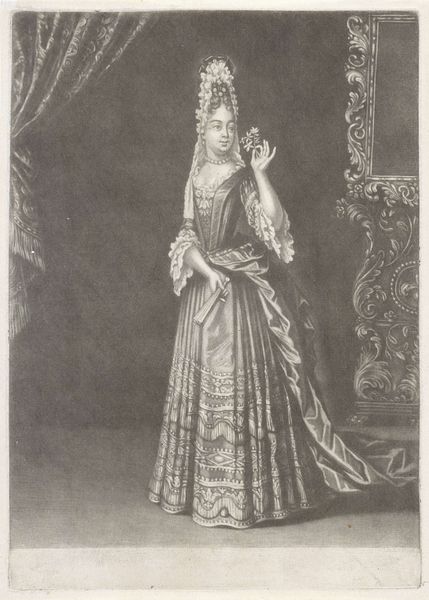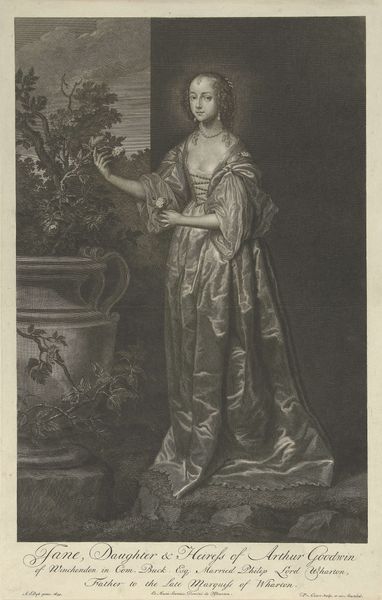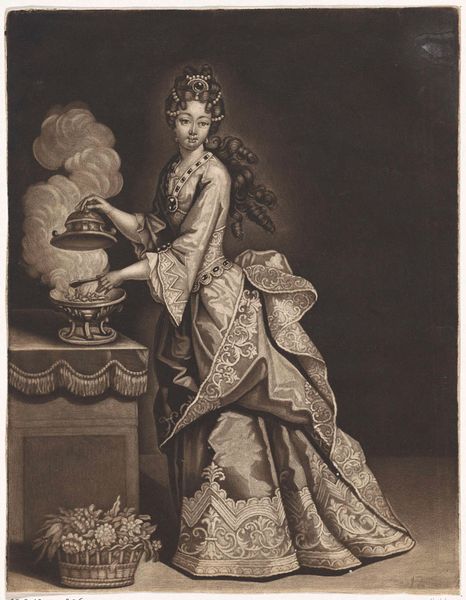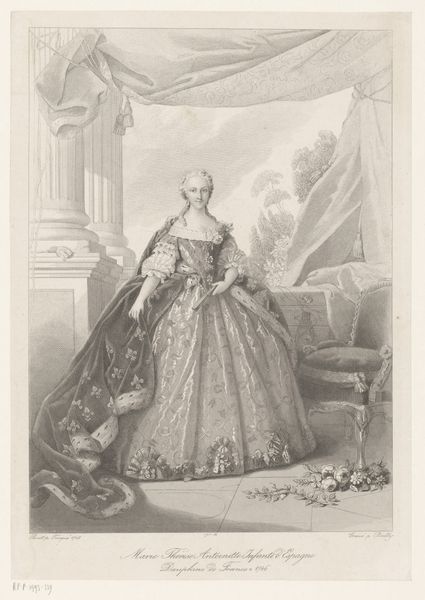
print, engraving
#
portrait
#
baroque
# print
#
history-painting
#
engraving
Dimensions: height 494 mm, width 344 mm
Copyright: Rijks Museum: Open Domain
Editor: This is Richard Houston's 1759 engraving, "Portret van Elizabeth Percy, hertogin van Northumberland" held at the Rijksmuseum. I am immediately struck by the sheer amount of detail, particularly in her robes. The engraving captures a real sense of power and wealth. What historical context informs our understanding of this piece? Curator: The portrayal of Elizabeth Percy speaks volumes about the role of aristocratic women in the 18th century. Consider how such portraits served as tools for constructing and solidifying social status. Notice the symbols of wealth – the ermine trim, the ornate fabric. How do these details reflect not just individual identity, but also the broader socio-political power structures of the time? Editor: I guess she’s performing wealth, not just possessing it. Almost like public relations? Curator: Precisely. Think about the intended audience. This print wasn’t simply a personal memento, it was intended for circulation, to broadcast her lineage and importance. How might the dissemination of such images contribute to maintaining social hierarchies? Moreover, it highlights the importance of dynastic succession in the 1700s. Her display of power in this portrait reminds the viewer that women of status have political agency, especially due to the privileges awarded to them by marriage. Editor: So, the print functions as a form of political messaging then. I’d initially just thought of it as a pretty picture. Curator: It is indeed. Understanding art like this demands an awareness of its function in communicating social and political messages. It reminds us that art rarely exists in a vacuum and always reflects and reinforces the power structures of its time. Editor: I’ll never look at portraits the same way again! Thanks for sharing your expertise.
Comments
No comments
Be the first to comment and join the conversation on the ultimate creative platform.

